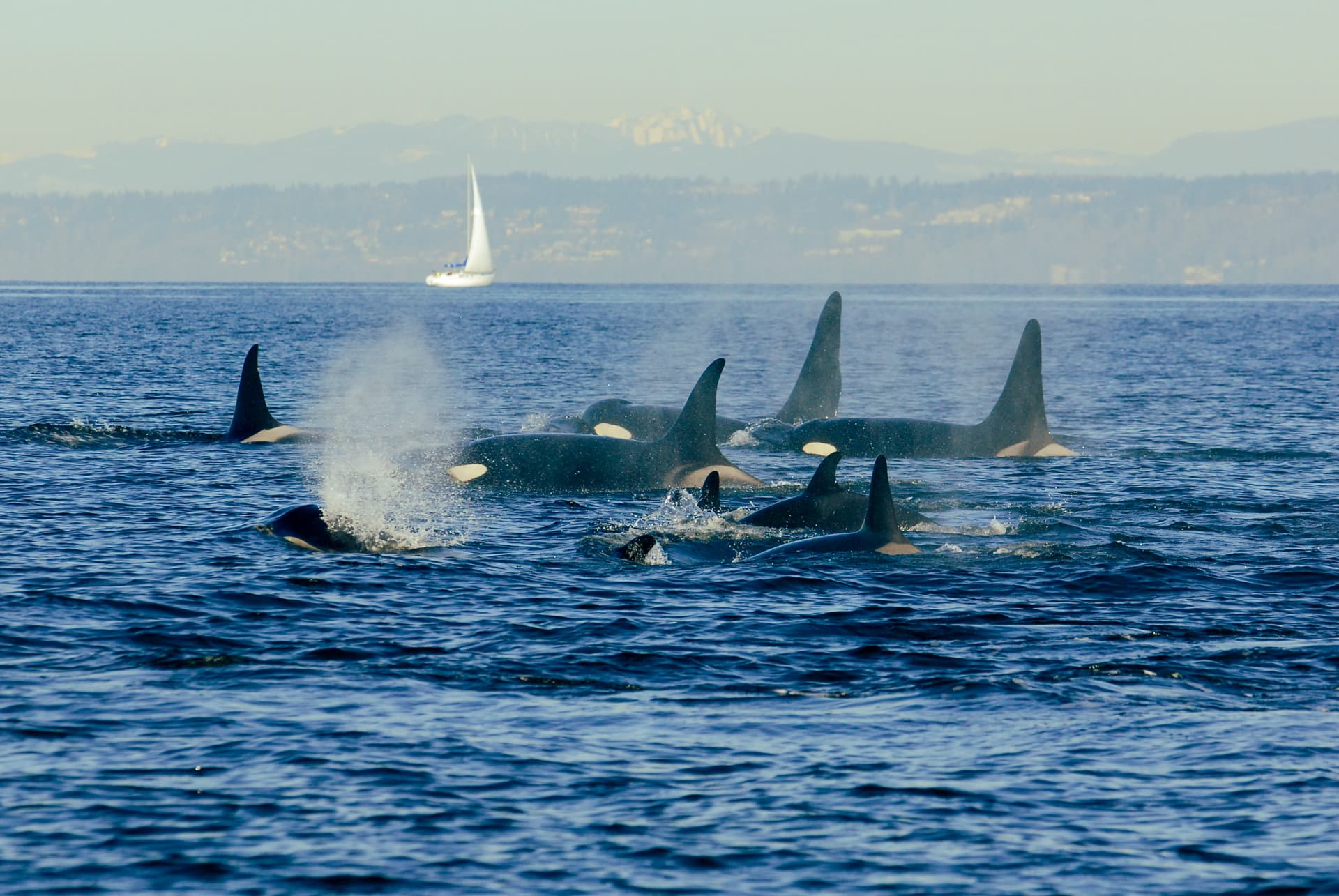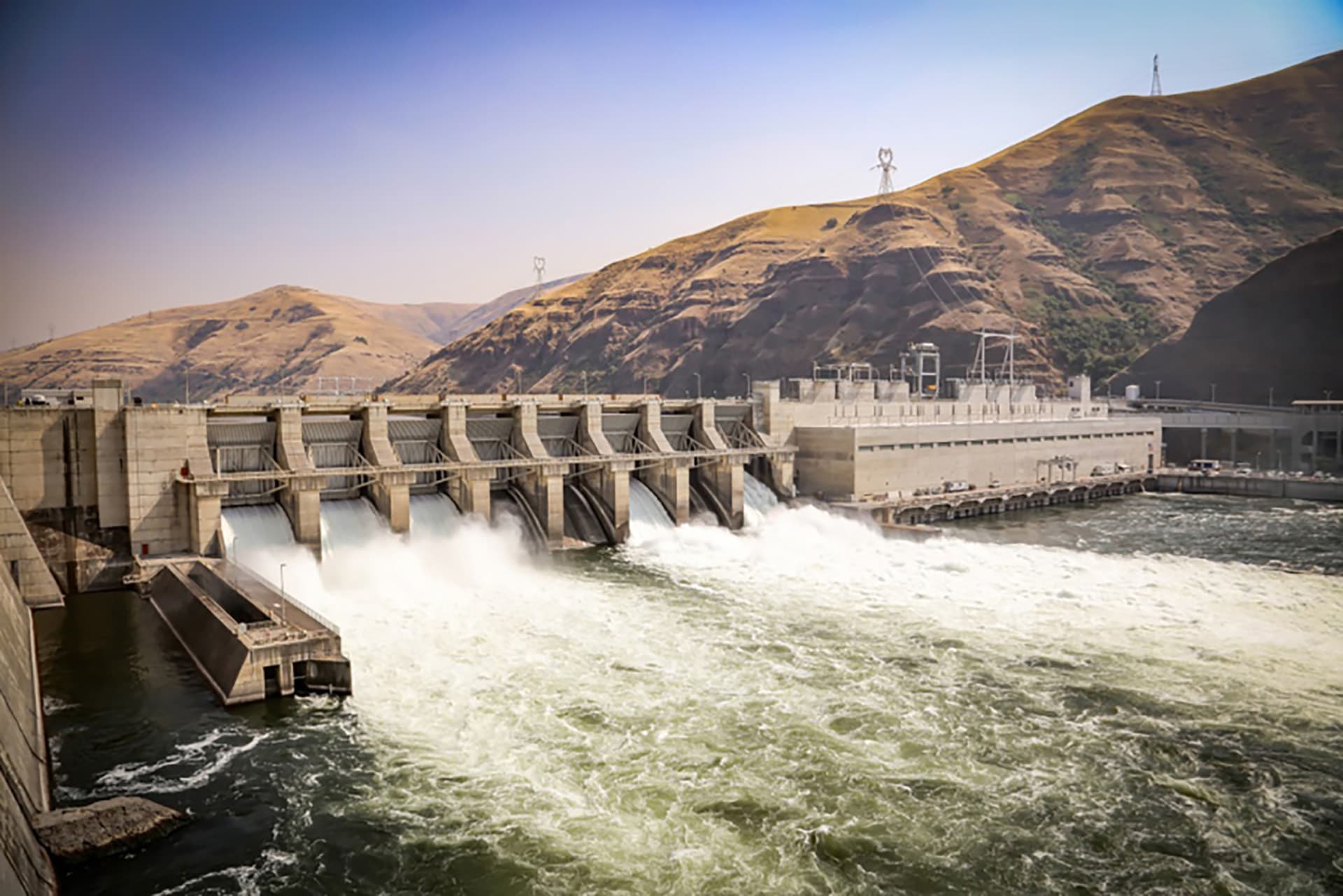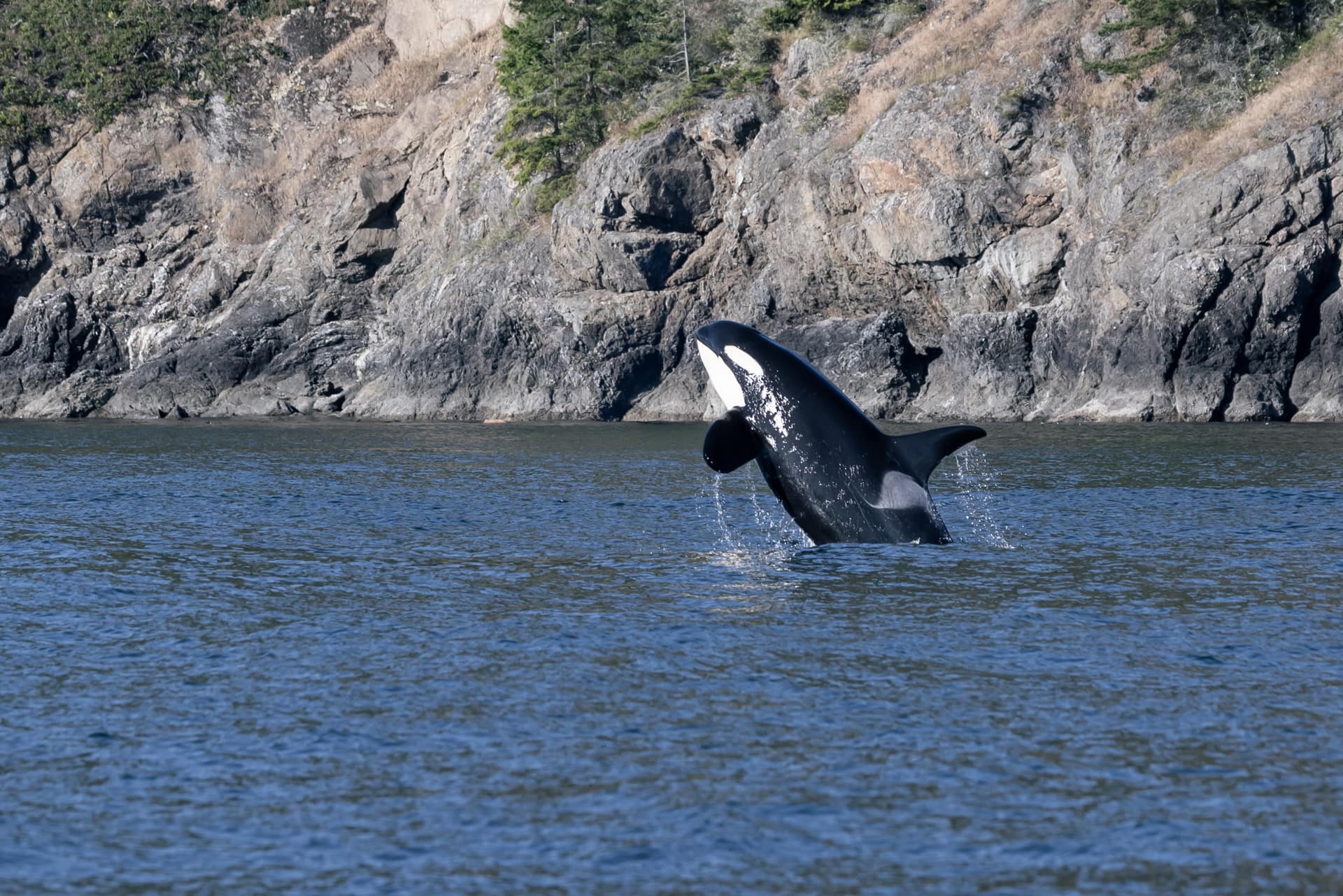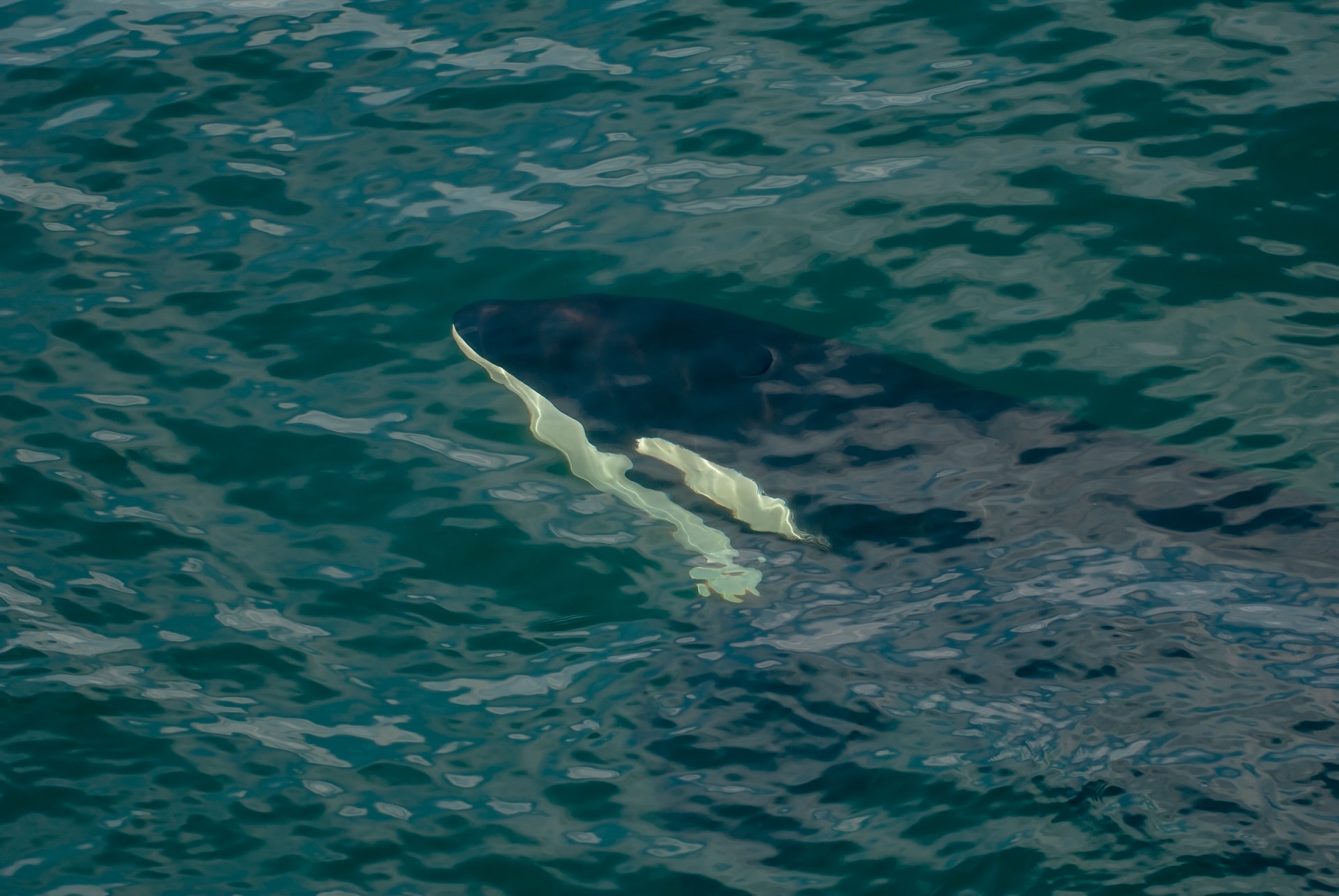
A five-year review of the Southern Resident killer whales’ endangered status was due in 2021, and its findings published January 4 conclude that “they continue to face a high risk of extinction and should remain listed as endangered.”
Little wonder when only 73 orcas in this community swim wild today—the lowest since studies began in the 1970s. Sadly, they were not protected until 2005, as the U.S. government initially refused to accept that this population was unique. This in spite of decades of research that showed several distinct orca populations on the West Coast, with different prey preferences, and certainly no interbreeding.
Eventually the government conceded that the Southern Residents met the legal definition of a “distinct population segment” and so in 2005 they finally were protected under the Endangered Species Act. NOAA Fisheries—responsible for fisheries and protection of marine species—published their recovery plan in 2008.
Under the law, NOAA is obliged to revisit an endangered status every five years to determine if legal protection is still warranted. This process involves public consultation, where evidence—such as new research—is collected and reviewed.
In the 15 years since officially being designated as an endangered species, the Southern Resident population has continued to decline almost every year. It is no secret that years of high mortality and low births coincide with years of low abundance of their primary prey, Chinook or King salmon. Yet in this latest review, NOAA claims that “despite being studied for more than 40 years, it is unclear which threat to this killer whale population is the most important for recovery.”
Research published in 2017 by the University of Washington showed that 69% of Southern Resident pregnancies failed between 2008—2014, and that the correlation between poor Chinook years and lost calves was striking, leading to the conclusion that, “low availability of Chinook salmon appears to be an important stressor… as well as a significant cause of late pregnancy failure.” While the researchers note that impacts such as disturbance from vessels and PCBs may also be at play—they are clear that recovering Chinook “should be among the highest priorities for managers aiming to recover this endangered population.”

The Lower Granite Dam on the Snake River.
NOAA lists a number of actions taken in the last 5 years, yet fails to show how these actions, at a cost of over $3 million, have made a difference to saving these orcas. Indeed the downward trajectory of the Southern Residents stands to refute any claim they might make. Instead NOAA seems intent on continuing to promote unproven methods—such as hatchery production—into the future, while steadfastly ignoring the elephant in the room, which is that coastwide Chinook fisheries continue to remove fish vital to the future populations of two endangered species, Chinook and orcas.
In fact, some populations of Chinook have been on the endangered species list for 30 years. 20 years ago, NOAA Fisheries acknowledged that removing the lower Snake River dams would be the best way to save Chinook from extinction, yet have not led any efforts to this end. As the nation’s fisheries manager they seem asleep at the switch, and now the climate crisis is raising water temperatures in salmon habitat, while floods destroy others.
Ongoing west coast initiatives to restore habitat, together with those proposed in Governor Inslee’s latest salmon recovery plan, are necessary and welcome, but some of these large-scale projects are years from conclusion. Time is running short to save these orca predators and their prey.
Will 2022 be the year that NOAA Fisheries acts first in the interest of both of these endangered species, that in the end would also be in the best interest of fisheries? We sure hope so, but we need to keep the pressure on. Will you join our efforts to hold NOAA accountable for the recovery of the Southern Resident killer whales? Please take action today.






